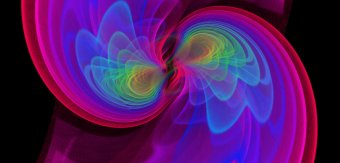Gravitational waves in the cloud
Cécile Cavet and Antoine Petiteau wrote an article on LISA applications in the cloud, in connection with the project “Data distribution, visualization and cloud computing“. You can find the original article on the IN2P3 website.

Numerical simulation of gravitational waves emitted during the fusion of two black holes – © S. OSSOKINE, A. BUONANNO (Max Planck Institute for Gravitational Physics), W. BENGER (Airborne Hydro Mapping GmbH)
The calculations associated with the detection of gravitational waves will generate peak loads spaced over time and appear to be excellent candidates for using the elasticity offered by cloud computing.
This study showed that cloud technology is very well adapted to the problems of space missions. The ability to quickly switch computations from a local cluster to a virtual cluster is indeed feasible with an automatic deployment manager like SlipStream. Virtual machines also allow extra-institute users such as the eLISA consortium to have easy access to analysis codes and mission data. The cloud is therefore appropriate to meet the constraints of a wide range of scientific applications.
To go further:
- Presentation in “journées SUCCES 2015” : http://succes2015.sciencesconf.org/conference/succes2015/C_cavet.pdf et http://webcast.in2p3.fr/videos-etude_des_ondes_gravitationnelles_de_lespace_au_cloud
- SlipStream, service France Grilles
